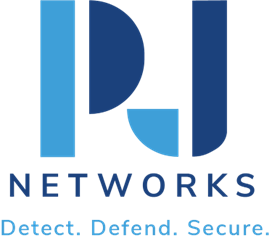Netskope SASE: Understanding SASE Components, Secure Web Gateway, Cloud Security, and ZTNA
Introduction to SASE Architecture
The demand for a comprehensive security platform that provides everything organizations both large and small need to succeed in today’s constantly changing cybersecurity environment has driven the rise of new technologies, with Secure Access Service Edge or SASE being one. SASE, pronounced “sassy,” is a new model that combines network security and wide area networking (WAN) capabilities into a single cloud-native service. SASE is wholly redefining how organizations secure and control their cloud environment, at the same time providing myriad efficiencies in terms of scalability, cost-effectiveness and bolstered security posture.
A major player in this space is Netskope. Netskope SASE not only leads the way in SASE innovation, it helps secure this diverse IT landscape by tying together a converging mix of core components such as Secure Web Gateway (SWG), Cloud Access Security Broker (CASB), Zero Trust Network Access (ZTNA). In this blog post, we will deep dive into 5 of these core elements that make SASE and how when put together they act as an integrated security framework.
Key Components
Secure Web Gateway (SWG)
Critical to SASE components, the Secure Web Gateway protects internal network resources from thousands of threats on a daily basis. This antivirus software removes potential malware and unauthorized access to prevent confidential information from cyber threats. SWG analyzes data traffic at run-time and applies security policy as per web filtering, malware detection, and URL blocking. By making internet activity transparent, it helps organizations to better structure their resources and adapt processes in the scope of data management and meeting regulatory demands.
Cloud Access Security Broker (CASB)
CASB sits in between cloud providers and users, and thus it does fall more into the cloud security category. It serves as a way to enforce security policies during the usage of cloud-based resources. A CASB provides four core functionalities: visibility, data security, threat protection and compliance. It does this by providing these capabilities to protect your corporate data as users interact with cloud applications. CASB detects potential threats and anomalies in real time, thus eliminating the risks such as shadow IT and data exfiltration.
Zero Trust Network Access (ZTNA)
With a Zero Trust posture, ZTNA abandons the concept of a secure network perimeter. Instead of just assuming trust because someone is on a particular part of the network, ZTNA activities confirm user IDs for every access request. The granular access control model means no entity is trusted by default, reducing the attack surface dramatically. ZTNA plays a foundational role in providing secure access to applications anywhere the user, device or application resides.
How These Components Work Together
The combination of SWG, CASB and ZTNA on the Netskope SASE platform is a great example of how cloud security as a whole should be approached. SWG offers perimeter security where it controls access of internet, through web interactions in a compliant and secure manner. At the same time, CASB also closes the data exfiltration hole in cloud applications, by applying security policies and identifying threats. A Zero Trust Zero Based Network Access (ZTNA) method can also be implemented to harden security in alignment with modern distributed network architectures.
Together, these pieces provide a flexible and reliable end-to-end network security solution on the one hand and adapt to your evolving business operational needs on the other. Netskope SASE is unified to detect and respond quickly to threats, protecting enterprise data and applications in a complex digital world. This holistic approach naturally reduces management complexity and builds a more resilient cybersecurity foundation.
Advantages of Integrated SASE Framework
A truly integrated SASE framework is a key competitive differentiator for organizations in several important areas:
- Consistent Security Posture: Netskope SASE unifies network and security, eliminating gaps traditional segmented solutions have that might decrease an organizations security stance.
- Scalability and Flexibility: A SASE approach in the cloud-native model makes it easy for businesses to scale their security efforts as they grow, without having to think about hardware updates.
- Cost: Centralizing multiple security functions in under one platform prevents complex and costly appliance and software consolidations.
- Simplified Management: This brings a centralized management console to the IT teams who can manage and link security and network tasks through a common tool, thereby making operations more efficient.
- Enhanced User Experience: With reduced latency and traffic routing optimization, a bundled SASE framework ensures an improved yet secure user experience which is very essential for remote and hybrid work environments to maintain productivity.
In short, Netskope is the cutting edge in cybersecurity technology: a full-service software package that can scale to satisfy the needs of an incredibly diverse and developing digital world. Combined with a SWG, CASB, and ZTNA, this provides an unbeatable security architecture that protects the most vulnerable aspects of sensitive data and applications along with businesses inherent business agility allowed in this new digital age. SASE is an inseparable pillar in the future growth and resilience of organizations fighting through delivering a cloud-first world for retrieving whatever applications of their need.
